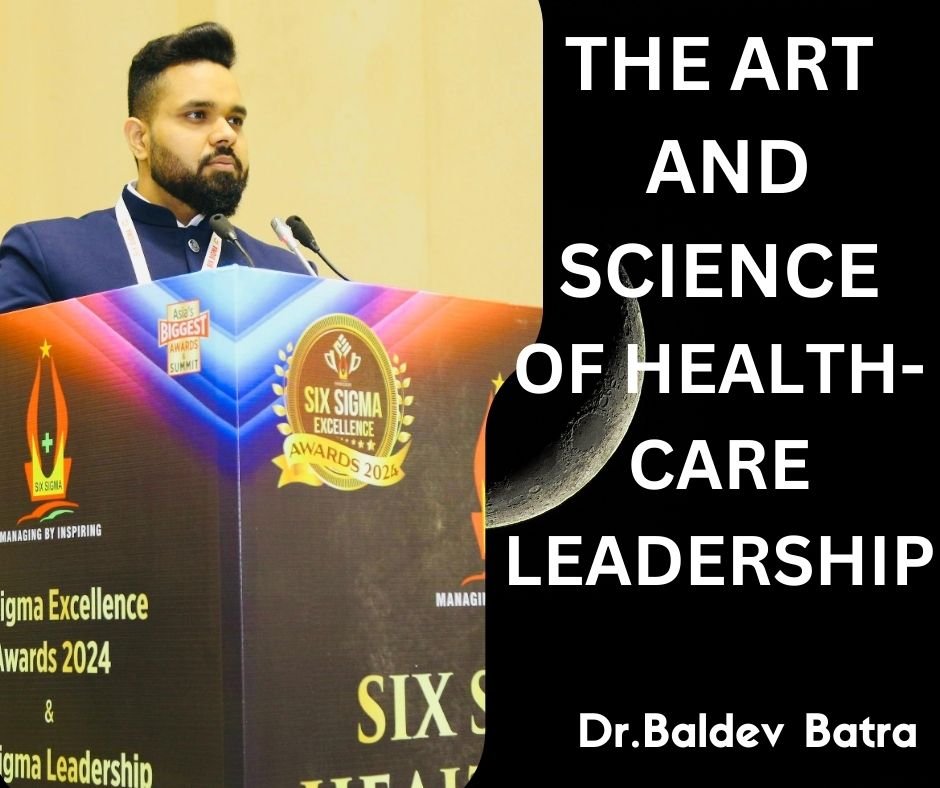THE ART AND SCIENCE OF HEALTHCARE LEADERSHIP

THE ART AND SCIENCE OF HEALTHCARE LEADERSHIP: In the dynamic and multifaceted realm of healthcare administration, the strategic planning process serves as a compass guiding organization through turbulent waters towards their desired destinations of growth and sustainability. From rural clinics to metropolitan hospitals, the ability to chart a course that aligns with evolving patient needs, technological advancements, and regulatory landscapes is paramount. This comprehensive article delves into the intricate fabric of strategic planning and decision making in healthcare administration, exploring foundational concepts such as environmental scanning, SWOT analysis, goal setting, and decision-making frameworks, while highlighting their practical applications in ensuring organizational success.
UNDERSTANDING THE LANDSCAPE: ENVIRONMENTAL SCANNING
The first step in the strategic planning journey involves peering beyond the horizon to gain a comprehensive understanding of the external forces shaping the healthcare landscape. Environmental scanning entails a systematic examination of factors ranging from socioeconomic trends and legislative changes to technological innovations and competitive dynamics. By conducting thorough analyses and staying attuned to emerging trends, healthcare administrators can anticipate shifts in the market, identify opportunities for growth, and pre-emptively address potential threats. Moreover, environmental scanning fosters a culture of adaptability within organizations, enabling them to pivot swiftly in response to changing conditions and maintain a competitive edge in the ever-evolving healthcare arena.
ASSESSING STRENGTHS, WEAKNESSES, OPPORTUNITIES, AND THREATS: SWOT ANALYSIS
Central to the strategic planning process is the SWOT analysis, a diagnostic tool that provides a panoramic view of an organization’s internal strengths and weaknesses, as well as external opportunities and threats. Strengths may encompass attributes such as a robust clinical reputation, state-of-the-art facilities, or a loyal patient base, while weaknesses could manifest as inefficiencies in operational processes, workforce shortages, or outdated infrastructure. Meanwhile, opportunities may arise from shifts in consumer preferences, advancements in medical technology, or strategic partnerships, whereas threats could emanate from regulatory changes, competitive pressures, or economic downturns. By conducting a rigorous SWOT analysis, healthcare administrators can distil key insights, inform strategic decision making, and cultivate a proactive approach to organizational management.
SETTING THE COURSE: GOAL SETTING
Armed with insights gleaned from environmental scanning and SWOT analysis, healthcare administrators embark on the pivotal task of goal setting, charting a course that aligns organizational aspirations with tangible outcomes. Goals serve as beacons of direction, guiding strategic initiatives and galvanizing stakeholders towards a common vision of success. Moreover, effective goal setting adheres to the SMART criteria, ensuring that objectives are Specific, Measurable, Achievable, Relevant, and Time-bound. Whether the aim is to enhance patient satisfaction, optimize operational efficiency, or expand service offerings, the establishment of clear and actionable goals empowers organizations to track progress, allocate resources judiciously, and course-correct as needed along the strategic trajectory.
MAKING INFORMED DECISIONS: DECISION-MAKING FRAMEWORKS
In the labyrinthine landscape of healthcare administration, decision making is often fraught with complexity, uncertainty, and competing interests. Decision-making frameworks offer structured methodologies for navigating this terrain, enabling stakeholders to evaluate alternatives, weigh risks, and arrive at informed choices. The rational decision-making model, for instance, delineates a systematic process encompassing problem identification, solution generation, criteria evaluation, option selection, and implementation monitoring. Similarly, scenario planning enables organizations to anticipate multiple future trajectories, develop contingency plans, and mitigate risks associated with uncertainty. By leveraging decision-making frameworks, healthcare administrators can navigate the myriad challenges inherent to healthcare management, foster organizational resilience, and position their institutions for sustained success in an ever-changing landscape.
CONCLUSION:
In the crucible of healthcare administration, strategic planning and decision making serve as linchpins, anchoring organizations amidst tumultuous seas of change and uncertainty. By conducting meticulous environmental scanning, conducting rigorous SWOT analyses, setting SMART goals, and employing decision-making frameworks, healthcare administrators can steer their organizations towards the shores of growth, resilience, and sustainability. As the healthcare landscape continues to evolve, the imperative for strategic agility and foresight remains unwavering, underscoring the indelible importance of strategic planning and decision making in shaping the future of healthcare delivery. Armed with these foundational principles, organizations can navigate the complexities of the healthcare ecosystem, catalyse innovation, and deliver exceptional care to patients and communities alike.
Prof. (Dr.) Baldev Batra
Head- Medical Administration
NKS Group of Hospitals





